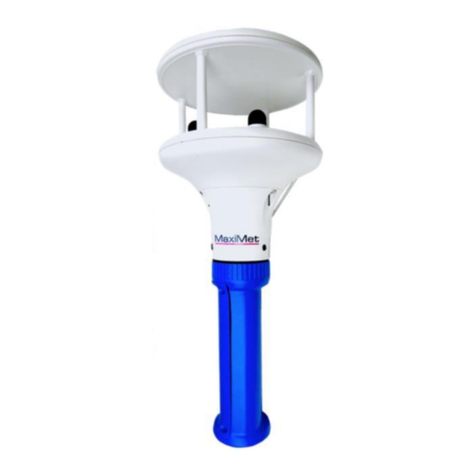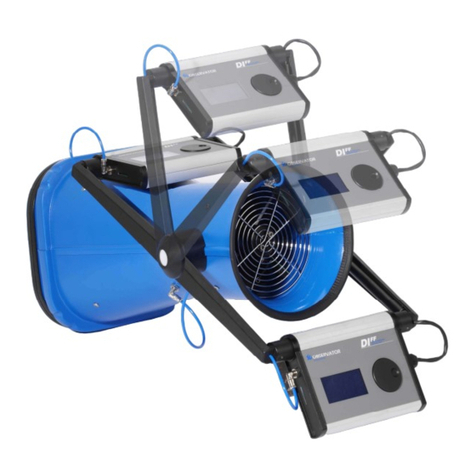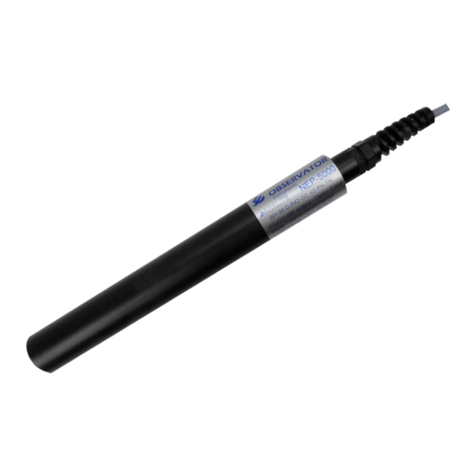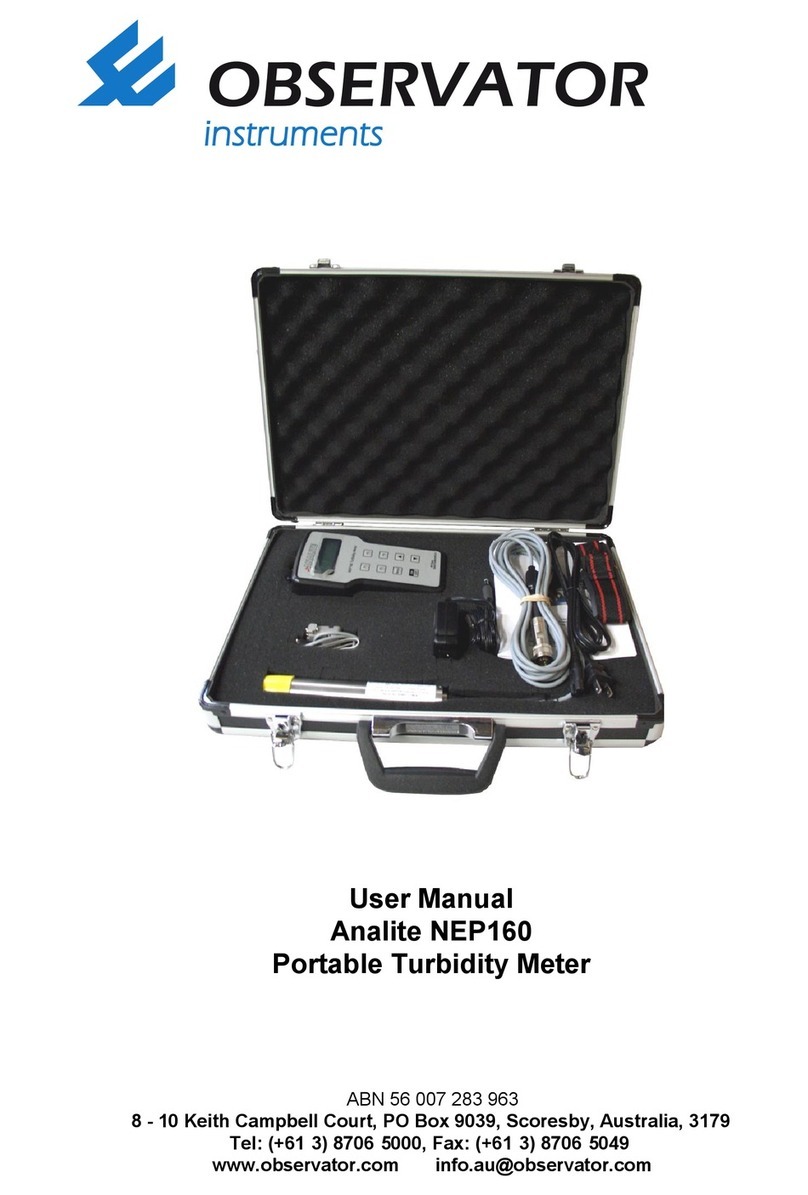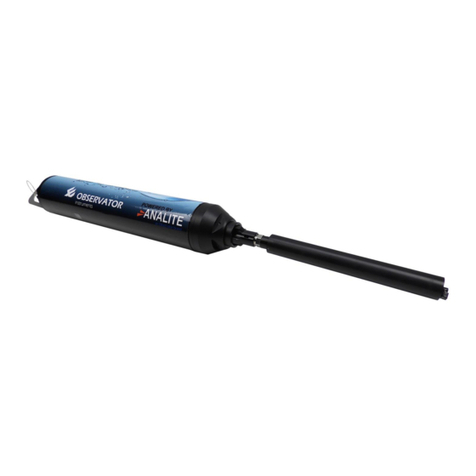
DIFF automatic volume flow meter User manual
V11.2 - EN Page 2 TDC 16-7-2012
OBSERVATOR
instruments
Index
1. INTRODUCTION ......................................................................................................................... 4
2. DESCRIPTION AND USAGE ..................................................................................................... 5
2.1 OPERATION COMFORT AND ERGONOMICS...................................................................................6
2.2 OPERATION ..............................................................................................................................6
2.3 BEFORE FIRST USE ...................................................................................................................6
2.3.1 Inserting the batteries .....................................................................................................6
2.3.2 MEASURING POSITIONS ..........................................................................................................7
2.3.3 Operation ........................................................................................................................7
3. THE MENU .................................................................................................................................. 8
3.1 CALIBRATION ............................................................................................................................8
3.2 MEASUREMENT.........................................................................................................................9
3.3 STORAGE .................................................................................................................................9
3.4 SETTINGS...............................................................................................................................10
3.4.1 Brightness/contrast.......................................................................................................10
3.4.2 Battery...........................................................................................................................10
3.4.3 Language......................................................................................................................10
3.4.4 Measuring unit / temperature unit.................................................................................11
3.4.6 Technical menu.............................................................................................................11
3.5 OVERRANGE PROTECTION .......................................................................................................11
3.6 OFF.......................................................................................................................................11
4. EXTENSION HOODS................................................................................................................ 12
5. BATTERIES .............................................................................................................................. 13
5.1 FIRST USE OF THE BATTERIES ..................................................................................................13
5.2 COMPATIBLE BATTERIES..........................................................................................................13
5.3 BATTERY LIFE .........................................................................................................................13
5.4 LIFETIME ................................................................................................................................13
5.5 WARNINGS .............................................................................................................................13
6. MAINTENANCE ........................................................................................................................ 14
7. DIFFINER .................................................................................................................................. 15
7.1 DOWNLOADING DIFFINER .......................................................................................................15
7.2 ADDING A PROJECT .................................................................................................................16
7.3 THE DIFF WITH AN SD-CARD ..................................................................................................17
7.4 OPENING THE DATA ON THE COMPUTER....................................................................................19
7.5 SD-CARD MESSAGES ..............................................................................................................20
8 DECOMMISSIONING................................................................................................................. 21
8 DECOMMISSIONING................................................................................................................. 21
8.1 DECOMMISSIONING THE DIFF (TEMPORARY) ............................................................................21
8.2 DISPOSAL OF THE DIFF ..........................................................................................................21
9. TROUBLE SHOOTING ............................................................................................................. 22
9.1 ERRORS .................................................................................................................................22
9.2 REPLACING THE FUSE .............................................................................................................23
9.3 DIFF SPARE PARTS.................................................................................................................23
10. WARRANTY............................................................................................................................ 24
APPENDIX: DECLARATION OF CONFORMITY ........................................................................ 25
